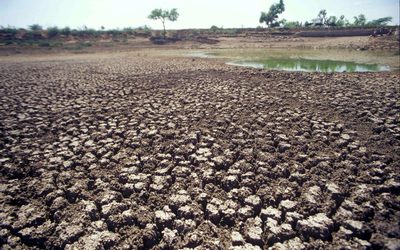AN EL Niño weather pattern, which can parch Australia and parts of Asia while bringing rain to South America, may occur in coming months, says Australia’s Bureau of Meteorology.
International climate models surveyed by the bureau show Pacific Ocean temperatures approaching or exceeding El Niño thresholds in the austral winter, the forecaster said on Tuesday. The El Niño-Southern Oscillation remains neutral at present, it said. Australia’s winter runs from June to August.
El Niños affect weather worldwide and can roil agricultural markets as farmers contend with drought or too much rain. There’s a 75% chance that one will occur in late 2014, says a report in journal PNAS this month. An El Niño may worsen dry weather in parts of Australia and Asia as Singapore and parts of Malaysia and Indonesia are already experiencing little rain.
Winter crops in Australia will be “greatly affected as it’s pretty much the crucial time through that period where they need rainfall,” said Graydon Chong, an analyst at Rabobank International in Sydney.
“That has knock-on effects to other commodities, livestock for example. The availability of feed and availability of pasture as a result of the hotter and drier conditions will play a big part.”
An El Niño toward the end of this year would increase temperatures globally in 2015, and having more time to prepare would help farmers and government agencies, researchers Josef Ludescher and Armin Bunde said in the PNAS report.
About 70% of Queensland state is in drought after its driest December since 1938, while New South Wales had the least rain in January since 2003, Bureau of Meteorology data show. Dry conditions will boost beef and veal exports to a record 1.1-million tons in the year ending June 30 and cotton production is set to decline, the Australian Bureau of Agricultural and Resource Economics and Sciences estimates.
Growth in Indonesia’s palm oil output will be limited in the first half by dry weather, Wilmar International said. Water rationing began in areas surrounding Malaysia’s capital after a prolonged drought, Selangor state chief minister Khalid Ibrahim said. Dry weather may last until middle to the end of March, the Malaysian Meteorological Department said.
El Niño and La Niña weather patterns have historically been severely disruptive for palm oil production, HSBC Holdings said on January 28. El Niño is the most damaging, causing output to drop long after the weather pattern has subsided, it said. Indonesia and Malaysia are the world’s largest palm producers.
While the pattern causes dry weather in Asia, an El Niño typically creates ideal growing conditions in the US Midwest during the summer, which is when the weather pattern is expected to occur this year, Art Douglas, meteorologist at Creighton University in Omaha, Nebraska, said on February 5.
“As we start to get into the middle of the year, that’s the crucial time and when people start watching indicators” including the Southern Oscillation Index, Rabobank’s Mr Chong said today. “It’s really once we get into middle months that we start looking at the impacts in the third quarter.”
Global food costs tracked by the United Nations dropped in January to the lowest level since June 2012. Palm oil gained 3.1% this year, and cotton futures rallied 5.8% and the price of Thai broken white rice, an Asian benchmark, climbed 2.9%.
“Warming of the tropical Pacific Ocean is likely in the coming months,” the Australian weather bureau said in its fortnightly ENSO update on Tuesday. “Recent observations add weight to the model outlooks. The tropical Pacific Ocean subsurface has warmed substantially in recent weeks.”
Bloomberg (2/26/2014). El Niño weather threat to Australia, Asia this year, Retrieved from http://www.bdlive.co.za/world/asia/2014/02/26/el-nino-weather-threat-to-australia-asia-this-year



